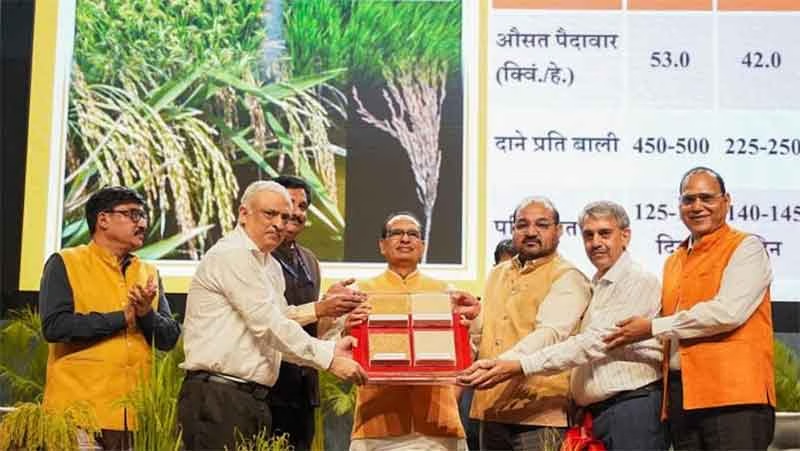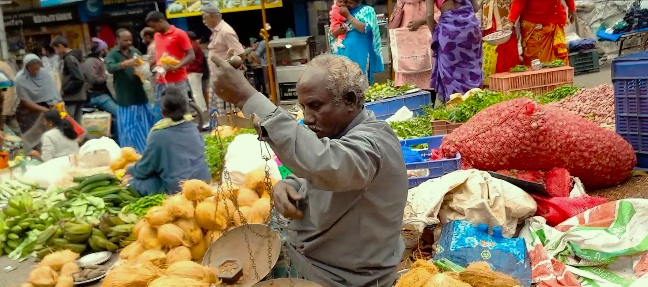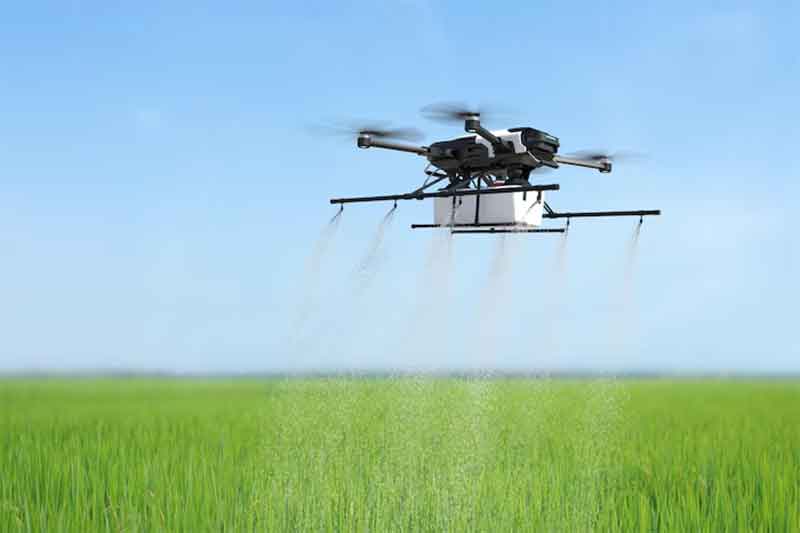
This article reassembles existing evidence to challenge a dominant narrative of the Bhopal disaster as a closed historical tragedy, arguing instead that it remains an ongoing disaster. While activists have previously called attention to this perspective, the article foregrounds it as its central theme. The criminality of Union Carbide is a continuing crisis that affects multiple generations. By connecting Bhopal to the broader impacts of the Green Revolution and the chemical paradigm in Indian agriculture, the article also situates the issue within a wider critique of corporate power.
I first visited Bhopal in 1998 and saw the memorial statue to the victims of Union Carbide’s corporate criminality: a deadly gas leak from its pesticide plant in December 1984. There was quite a bit of graffiti in English and in Hindi. I can recall seeing “killer Carbide” and “Hang Anderson” in large letters. I recently returned to the site. The graffiti has gone, and the concrete statue is in a state on ongoing decay.
The Bhopal Gas Memorial Statue, also known as the “Statue of Mother and Child,” is a poignant public sculpture created by Dutch artist Ruth Waterman. Erected in 1985, it depicts a grieving woman with a hand over her face, holding her baby. Her posture and expression capture intense sorrow and trauma. Behind the woman, a child is seeking protection under her garment and yet another is reaching up for help.
The statue is positioned at the periphery of the former Union Carbide factory site.
The Bhopal Gas Tragedy dominated global headlines and was the leading news story worldwide as it unfolded on 3 December 1984. More than 40 tons of highly toxic methyl isocyanate (MIC) gas leaked from a pesticide plant. Some 10,000 were said to have died in the first three days following the leak. The final death toll is estimated to be between 15,000 and 20,000, with approximately 500,000 survivors grappling with a myriad of severe health problems, including respiratory ailments, blindness, cancers and genetic defects that continue to affect subsequent generations.
The tragedy was a consequence of substandard safety protocols, cost-cutting and inadequate staffing at the plant, which was majority-owned by the US-based Union Carbide Corporation (UCC).
In the immediate aftermath, the Indian government’s response was slow and inadequate. Although criminal cases were filed and several Union Carbide employees arrested, the most senior executives, including UCC chairman Warren Anderson, evaded meaningful prosecution. Anderson was arrested briefly on his arrival in India but released on bail and never returned to face trial in India. The Indian government’s claim for $3.3 billion in damages was settled out of court in 1989 for $470 million—a sum widely criticised as grossly insufficient given the scale of human suffering.
Health crisis
Survivors of the gas leak continue to endure a broad spectrum of severe, long-term and chronic health consequences. These include debilitating respiratory problems such as pulmonary fibrosis, asthma and chronic obstructive pulmonary disease, alongside neurological, musculoskeletal, ophthalmic issues like eye irritation, blindness and cataracts and various endocrine disorders. The immediate physical damage was relatively easier to assess, but the full extent of health-related damages, particularly chronic conditions, took many years to manifest, often emerging long after initial legal settlements were finalised.
This means that the true human cost of the disaster was severely underestimated during the early compensation frameworks, leading to inadequate and insufficient medical support for a population whose health was progressively deteriorating.
A significant challenge was the limited understanding of methyl isocyanate (MIC)’s toxicity in humans. No population had ever been subjected to such a massive quantity of MIC. The initial ignorance about MIC’s long-term toxicity, combined with the delayed manifestation of chronic health conditions, directly contributed to the severe underestimation of the true human cost. This profoundly affected the adequacy of compensation and the provision of ongoing medical care, leaving a legacy of unaddressed suffering.
Men who were in the womb at the time of the disaster exhibited a significantly higher risk of developing disabilities that affected their employment 15 years later. More strikingly, after 30 years, these individuals faced an eightfold higher risk of cancer compared to unexposed cohorts. For men who never relocated from the affected area, the cancer risk was even more alarming, reaching a 27-fold increase. This quantitative evidence of inherited health burdens unequivocally demonstrates that the disaster’s consequences are not limited to those directly exposed but extend to their descendants.
The disaster had devastating effects on the reproductive health of women. Academic studies document a fourfold increase in miscarriage rates following the gas leak, along with an elevated risk of stillbirth and neonatal mortality. Decades later, menstrual abnormalities and premature menopause have become common problems among exposed women and their female offspring.
Women residing within 100 km of Bhopal experienced a relative decrease in male births in 1985, with the proportion dropping from 64% in 1981-84 to 60%. This suggests a higher vulnerability of male foetuses to the external stressor of toxic gas exposure.
The most visible manifestation of intergenerational harm is the reported incidence of birth defects across three generations. These include severe conditions such as cerebral palsy, muscular dystrophy, Down’s syndrome, attention deficit hyperactivity disorder, blindness, learning difficulties and gross motor delay. Compelling evidence indicates that genetic damage and chromosome instability persist in survivors, potentially playing a definitive role in the progression of cancer and other genetic diseases in subsequent generations. The consequences of toxic exposure are literally encoded within the genetic material of the affected population and their descendants.
Moreover, reports indicate high levels of mental stress, behavioural disorders, post-traumatic stress disorder (PTSD), anxiety and depression. These mental health burdens are often exacerbated by the ongoing socioeconomic challenges faced by the affected communities.
The gas leak affected people across a substantially more widespread area than previously demonstrated, with health impacts visible in a 100 km radius around Bhopal. The original understanding of the gas leak’s impact was often confined to a 7 km radius. However, the documentation of impacts up to 100 km fundamentally alters the scale of the disaster, underscoring the inadequacy of historical relief efforts and the need for a re-evaluation of the affected population for medical and compensatory purposes.
Reports indicate that governmental interference has hindered systematic investigations into persisting and emerging health problems. Findings from critical studies, such as those by the Indian Council of Medical Research (ICMR) and the Sambhavna Trust, have sometimes been contentious or even suppressed, raising concerns about transparency and the integrity of public health data.
A major impediment to effective treatment has been Union Carbide’s persistent refusal to fully identify all leaked reaction products and their precise toxicity. This lack of crucial information has actively prevented doctors from developing appropriate and targeted treatment protocols for victims. Furthermore, workers at the plant were reportedly denied access to their own medical reports, with the corporation asserting its right to withhold this vital medical information as protected trade secrets.
This corporate secrecy and alleged governmental suppression of data highlight a critical dimension of the ongoing disaster: the active suppression of information that could alleviate suffering and improve long-term outcomes.
Environmental crisis
Decades after the initial gas leak, thousands of tonnes of toxic waste remain buried in and around the abandoned Union Carbide plant site. Although the former factory site was officially turned over to the state of Madhya Pradesh in 1998, neither Dow Chemical, which acquired UCC in 2001, nor the Indian government has properly cleaned the site.
Toxic wastes from the factory site were channelled into three massive “solar evaporation ponds,” which subsequently leaked slowly into the surrounding soil and groundwater. Internal UCC memos from as early as 1982 indicated that these ponds were leaking even before the gas disaster, demonstrating a long-standing awareness of the contamination risk. This poisoned groundwater has become the primary source of water for daily use—washing, cooking and drinking—for families in the affected areas, impacting an estimated 200,000 people across 71 villages.
Analysis of the contaminated water has identified a range of hazardous pollutants, including organochlorines, dichlorobenzene, trichlorobenzene, hexachloride, heavy metals such as mercury, lead, chromium and nickel, as well as various pesticides. The contamination of groundwater represents a secret second disaster, a slow form of environmental violence that extends the disaster’s timeline and scope of harm far beyond the initial gas leak.
The environmental contamination has had a disproportionately severe impact on already vulnerable communities in Bhopal. The polluted soil and water are directly linked to chronic health problems and a high incidence of birth defects among the area’s inhabitants.
The victims of the disaster and those suffering from the ongoing contamination predominantly belong(ed) to low-income, marginalised and minority communities. This situation highlights the intersection of environmental degradation with social justice issues, demonstrating how environmental harm is unequally distributed, leading to compounded suffering for those least able to cope.
Major international human rights organisations and scholars have described Union Carbide’s actions in Bhopal as an example of environmental racism. Amnesty International, in particular, stated on the 40th anniversary of the disaster that “environmental racism enabled forty years of injustice for survivors of the Bhopal gas tragedy”.
While a recent development in January 2025 involved the shifting of 337 metric tons of hazardous waste for incineration, activists contend that this amount represents not even 0.05% of the total waste present at the site. The Indian Supreme Court’s 2004 order to provide clean drinking water to residents underscores the chronic environmental neglect.
Furthermore, there are ongoing disputes regarding the safety protocols for the incineration process, and a comprehensive scientific assessment of the contamination’s full extent and impact remains elusive. This contradiction—between a visible, albeit small, cleanup effort and the vast, unaddressed contamination—demonstrates that, despite some symbolic actions, the core problem of comprehensive environmental remediation remains unresolved.
Corporate hubris and the shadow of the Green Revolution
The Bhopal Gas Tragedy is emblematic not only of industrial negligence but also of the broader consequences of the Green Revolution’s chemical paradigm, revealing a stark irony between corporate promises and devastating realities.
Long before the gas leak, Union Carbide projected itself as a benevolent force shaping India’s agricultural future through its infamous “Hand of God” advertising campaign from the 1950s and 1960s. One ad depicted a giant, godlike hand hovering over Indian fields, pouring chemicals onto the soil as if bestowing a miraculous gift of modern science and industrial progress to the “backward” Indian farmer. The colossal hand poured pesticides from a laboratory flask, with a Union Carbide pesticide factory looming in the distance and Mumbai’s iconic Gateway of India visible.
This imagery promised a brave new world for India, supposedly liberated from pestilence and poverty through chemical science, conveniently glossing over colonial legacies, misguided policy direction post-independence and echoing Western paternalistic sentiments that positioned local expertise as inferior. The tragic irony is stark: Union Carbide’s propaganda and practices resulted in one of the worst industrial disasters in history. The pesticides produced there, intended to protect crops, have also contributed to widespread human health crises and ecological harm.
Punjab, the heartland of India’s Green Revolution, embraced chemical-intensive agriculture. It has unleashed a wave of environmental degradation and health problems. Pesticide overuse has contaminated soil and water, caused acute and chronic pesticide poisoning among farmers and rural communities and contributed to alarming rates of cancer, neurological disorders and reproductive health issues.
Scholars and activists such as Bhaskar Save and Vandana Shiva have been vocal critics of the Green Revolution’s chemical paradigm. Save, a farmer and environmentalist, emphasised the harm to soil fertility and biodiversity caused by chemical-intensive farming. Vandana Shiva has extensively documented how such practices undermine traditional knowledge, poison the environment and lead to farmer indebtedness and suicides.
The heavy reliance on synthetic pesticides and fertilisers, exemplified by the practices promoted by companies like Union Carbide, has created a vicious cycle of ecological damage: soil degradation, loss of indigenous seed varieties, water pollution and declining resilience of farming systems. Union Carbide’s “Hand of God” campaign encapsulates the ongoing hubris that believes technology and chemicals can overcome systemic socio-economic challenges and conquer nature—and too often the poor and the marginalised pay the price, whether small-scale farmers or, as in this case, the urban poor.
Justice denied
In February 1989, the Supreme Court of India directed a final settlement of $470 million for all Bhopal litigation. However, this amount was based on a severe underestimation of the actual number of victims. For instance, the settlement assumed approximately 3,000 deaths, whereas by March 2003, official figures revealed more than 15,180 awarded death claims. Similarly, the initial estimate of 100,000 injured contrasted sharply with over 553,015 actual injury claims by 2003.
A critical ethical lapse in the settlement process was its negotiation and agreement without any consultation with the Bhopal survivors themselves. This exclusion contributed significantly to the deep-seated perception of justice denied from the outset. The compensation disbursed averaged around $500 per victim, with many receiving as little as Rs 25,000. Most of these meagre funds were reportedly used for immediate healthcare needs and repayment of loans, failing to provide long-term support for the chronic health issues and economic hardships endured by the victims.
A major setback for victims occurred when the Supreme Court of India dismissed the Government of India’s curative petition, which had sought over $1 billion in enhanced compensation. This decision effectively brought an end to a long-standing legal avenue for increasing the original settlement amount. This ruling further entrenched the perception among victims and activists that the formal legal system has failed to deliver comprehensive justice.
Despite the civil settlement, a criminal case against Dow Chemical, as the successor to Union Carbide Corporation, has been pending for nearly 40 years. Dow Chemical made its first appearance in a Bhopal court in October 2023, after reportedly ignoring six previous summonses over 17 years. This appearance, however, has not led to a substantive engagement with the charges.
In 2010, seven former UCIL employees were convicted of causing death by negligence but received only two-year jail terms and nominal fines. Most were granted bail immediately, and none served significant prison time. The Indian government’s decision to settle early and forego harsher criminal prosecution effectively denied survivors their right to full justice. The courts’ reluctance to apply more stringent charges such as culpable homicide not amounting to murder further compounded this injustice.
Dow Chemical consistently asserts that Indian courts lack jurisdiction over the US firm. The company argues that it acquired UCC 17 years after the disaster (in 2001) and that UCC remains a separate corporate entity, implying no transfer of criminal liability. This legal strategy aims to avoid substantive engagement with the criminal charges by challenging the court’s authority over the company.
The prosecution, represented by the Central Bureau of Investigation (CBI), counters Dow’s arguments by contending that jurisdiction is determined by the location where the crime occurred—undisputedly India. The CBI is actively seeking Dow’s business integration plan to ascertain the amount of UCC’s assets that were transferred to Dow, a crucial step in piercing the corporate veil and establishing a link to the original liability.
Victims of the gas tragedy assert that the Madhya Pradesh High Court had already resolved the jurisdiction issue in 2012, and therefore, Dow Chemical should be formally named as an accused in the case. The dismissal of the curative petition, coupled with Dow’s persistent legal manoeuvres to evade jurisdiction, highlights the profound systemic challenges in holding powerful multinational corporations accountable for historical environmental and human rights abuses, particularly across international legal boundaries.
Survivor groups and their supporters are driven by five core demands: the comprehensive cleanup of contaminated soil and groundwater to international standards, a proper compensation payment to each Bhopal survivor, the criminal prosecution of Dow Chemical, the development of standardised practices for healthcare and research related to the disaster and the provision of monthly pensions for all widows of gas victims.
The Bhopal tragedy is a stark illustration of the risks inherent in transferring dirty or dangerous technologies to the Global South, where multinational companies often apply lower safety standards than in their home countries. This highlights a pattern where the pursuit of profit in developing nations comes at the irreversible expense of human lives and well-being, facilitated by a disregard for environmental and human rights.
The victims were overwhelmingly from the poorest and most marginalised communities, including lower castes and those living in informal settlements adjacent to the Union Carbide plant. These groups bore the brunt of the disaster, suffering immediate death, long-term health effects and deepened poverty due to disability, loss of employment and inadequate compensation.
The drive for profit was evident in the substandard safety measures, including poorly maintained equipment, inadequate worker training, a glaring lack of emergency response measures and poor communication protocols. Cost-cutting at the plant prioritised corporate interests over worker and community safety. The aftermath further highlighted deep-rooted inequities: poor victims struggled to access legal representation and adequate compensation, while Union Carbide (and Dow Chemical) leveraged its resources to limit liability and accountability.
The tragedy’s legacy is a stark indictment of power abused and justice denied, resulting in a humanitarian disgrace.
Bibliography
Books and Academic Articles
- Eckerman, Ingrid. (2005). The Bhopal Saga: Causes and Consequences of the World’s Largest Industrial Disaster. Universities Press.
- Fortun, Kim. (2001). Advocacy After Bhopal: Environmentalism, Disaster, New Global Orders. University of Chicago Press.
- Dhara, V. Ramana, & Dhara, Rosalie. (2002). The Union Carbide disaster in Bhopal: A review of health effects. Archives of Environmental Health, 57(5), 391-404.
- Shiva, Vandana. (1991). The Violence of the Green Revolution: Third World Agriculture, Ecology, and Politics. Zed Books.
- Stone, Glenn Davis. “New Histories of the Green Revolution.” The Geographical Journal, vol. 183, no. 2, 2017, pp. 170–174.
- Lapierre, Dominique, & Moro, Javier. (2002). Five Past Midnight in Bhopal: The Epic Story of the World’s Deadliest Industrial Disaster. Warner Books.
- Broughton, Edward. (2005). The Bhopal disaster and its aftermath: A review. Environmental Health, 4(1), 6. Reports and Institutional Sources
- Indian Council of Medical Research (ICMR). (Various Years). Health Effects of the Toxic Gas Leak from the Union Carbide Methyl Isocyanate Plant in Bhopal. Government of India.
- Sambhavna Trust Clinic. (Ongoing). Research and Reports on Bhopal Gas Tragedy Survivors. https://www.bhopal.org
- Greenpeace. (1999). The Bhopal Legacy: Toxic Contamination at the Former Union Carbide Factory Site. https://www.greenpeace.org/india/en/publication/1276/the-bhopal-legacy/
- Amnesty International. (2004). Clouds of Injustice: Bhopal Disaster 20 Years On. https://www.amnesty.org/en/documents/asa20/015/2004/en/
Legal and Policy Documents
- Supreme Court of India. (1989). Union Carbide Corporation v. Union of India (Bhopal Settlement Case).
- Supreme Court of India. (2023). Judgment on Curative Petition for Enhanced Compensation in Bhopal Gas Tragedy.
News and Magazine Articles
- The Guardian. (2024). Bhopal: The world’s worst industrial disaster, 40 years on. https://www.theguardian.com/world/2024/dec/03/bhopal-disaster-40-years-on
- BBC News. (2019). Bhopal gas disaster: The victims’ fight for justice. https://www.bbc.com/news/world-asia-india-30205189
- Al Jazeera. (2024). Bhopal: The slow violence of toxic legacy. https://www.aljazeera.com/features/2024/12/3/bhopal-the-slow-violence-of-toxic-legacy
Activist and Survivor Testimonies
- Bhopal Group for Information and Action. (Ongoing). Survivor Testimonies and Campaign Updates. https://www.bhopal.net
Farmer and Activist Perspectives
- Save, Bhaskar. (2006). Open Letter to the Indian Agriculture Minister: The Great Agricultural Deception. Retrieved from https://greatagriculturalchallenge.wordpress.com/the-great-agricultural-challenge/preface/register/bhaskar-save%E2%80%99s-open-letter/
Subscribe to Our Newsletter
Get the latest CounterCurrents updates delivered straight to your inbox.
Colin Todhunter is an independent researcher and writer and a research associate of the Centre for Research on Globalization. His open-access books on the global food system, industrial agriculture and corporate power can be accessed here.















































